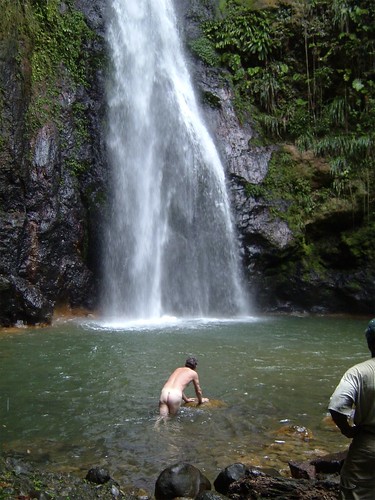
Don’t drink the water…
Dominica is seen by some as an undeveloped island in the Caribbean with little infrastructure, no resorts or casinos, and devoid of any cultural or historic attractions.[1] This no doubt turns off those who enjoy living luxuriously and in modern comfort. But tourists who like an unspoiled land in its natural state and beauty will love Dominica. This island, part of the Windward Islands, features rugged mountains, volcanic peaks, streaming rivers, black beaches, dense rainforests, cascading waterfalls, serene lakes, and bubbling geysers and hot springs. If tourist infrastructure, including a large airport, were ever built, Dominica could be a major Caribbean destination. But for now, this island remains a kept secret, catered to nature lovers.[2]
Geographically, Dominica is situated between Martinique in the south and Guadeloupe in the north. It covers 290 square miles and is the largest of the Windward Islands. The capital of Dominica is Roseau, which is located in the southeast.[3] The island’s population is slightly over 70,000 and includes about 3,000 indigenous Caribs who live in the northeast and still practice their customs, traditional arts and basketry.[4]
Attractions
Dominica’s main attraction is its natural “wild” beauty,[5] which lures many hikers and mountain climbers. It is the one island that may well be much the same as it was when Christopher Columbus first spotted it. The lush flora of Dominica is probably unrivalled in the Caribbean, due largely to the frequent rainfall the island receives.[6] The landscape is also dominated by dense tropical rainforests backdropped by mountain slopes. The highest peak is Morne Diablotin at more than 1,400 meters. In the south, you’ll find Morne Trois Pitons which peaks at about 1,390 meters. You’ll also find hot springs, bubbling lakes, volcanic sulphur vents, gorgeous waters, and clear streaming rivers including the Layou River in the central regions flowing westward and Belle Fille River which flows east; much of the island remains unexplored.[7]
Transportation
The island has about 470 miles of roads that are paved but poorly maintained. Taxis and minibuses are available for hire. Do not get in a taxi without registration numbers that start with the letter “H”. If you need a taxi after 6:00PM, be sure to book in advance as there are fewer taxis operating during the evenings. Minibuses are the cheapest way to travel around the island. There are also fishing boats available for hire if you want to sightsee or deep-sea fish.[8]
History
Dominica was originally inhabited by Caribs. Christopher Columbus spotted the island in 1493 on his second voyage to the New World. The first Europeans to settle Dominica were the French in the 1630s. The French and British battled over the island in the 1740s, which continued until the British defeated the French in 1759. But in 1778, the French recaptured the island. All this time, slaves used Dominica and its dense forests as a refuge in their escape from the plantations of neighboring islands. In 1783, the island once again reverted to the British. But guerrilla wars between plantation owners allied with the French and the new British conquerors persisted until 1814 when the French were finally defeated once and for all.[9]
During the late 19th century and well into the 20th century, Dominica became the world’s largest lime producer, the bulk of the juice coming from the Rose’s Lime Juice Factory. In 1967, Dominica became a self-governing member of the West Indies Associated States, although still affiliated with the United Kingdom. The next decade saw a period of political unrest, as the Dreads waged a violent war against the leaders of the island. They were eventually eradicated. Dominica finally obtained full independence from the UK in 1978.[10]
References:
“Dominica (Commonwealth of) Travel Guide – Overview.” < http://www.worldtravelguide.net/country/76/country_guide/Caribbean/Dominica-Commonwealth-of.html>
“Introduction to Dominica.” < http://www.frommers.com/destinations/dominica/2371010001.html>
Philpott, Don. Visitor’s Guide to the Windward Islands. Ashbourne: Moorland Publishing Company Ltd., 1996. ISBN: 0861905598.
[1] Introduction
[2] Dominica
[3] Philpott, 28
[4] Introduction
[5] Philpott, 28
[6] Introduction
[7] Philpott, 28
[8] Id. at 28-29
[9] Id. at 13-14
[10] Id. at 14


Comments